Some of the links in this post may be affiliate links.
Anthurium clarinervium is a stunning foliage houseplant in the Aroid family and is sure to stop you in your tracks with its dark green, deeply lobed heart shaped leaves and contrasting white veins.
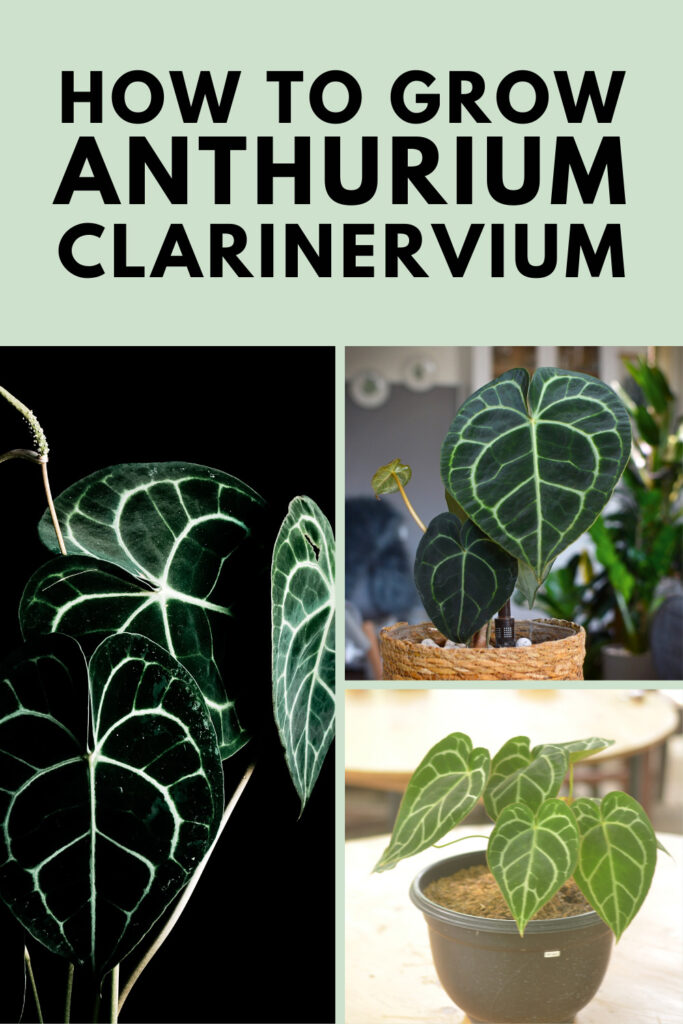
I’ll tell you how I care for mine and also discuss Anthurium care in general. It’s a fascinating genus and one that is growing in popularity among houseplant collectors (if you can find one, that is!)
Anthurium clarinervium is native to Mexico and grows as an epiphyte. Since it is an epiphyte, it has special potting soil needs which I’ll discuss soon!
They do flower, and will look similar to many aroid family flowers in that they have both a spadix and a spathe, but they are insignificant on Anthurium clarinervium.
These plants clearly are grown for their striking, leathery, thick foliage.
Table of Contents
Anthurium Clarinervium: Care Guide
Many species in the Anthurium genus can get prohibitively large inside the home. The clarinervium is a smaller growing species that is perfect to grow in the home! Indoors, the leaves will grow to about 6″ or a little larger.
LIGHT
These plants enjoy mostly bright indirect light or filtered sunlight. Keep these plants away from too much direct sun. A little bit is fine.
An exception is in the winter time if you live in areas with much shorter and cloudier days like I do. During those months, some direct sun will greatly benefit these plants.
My own plant sits in an Eastern facing window so it get some morning sun. In the summer, I place the plant outside in complete shade.
TEMPERATURE
Anthuriums love and thrive in warm temperatures. Aim to keep them at 70-90F (21-32C) if you can. I keep mine in my sunroom and it does get into the 60s (F) in the winter but I wouldn’t go much lower than that.
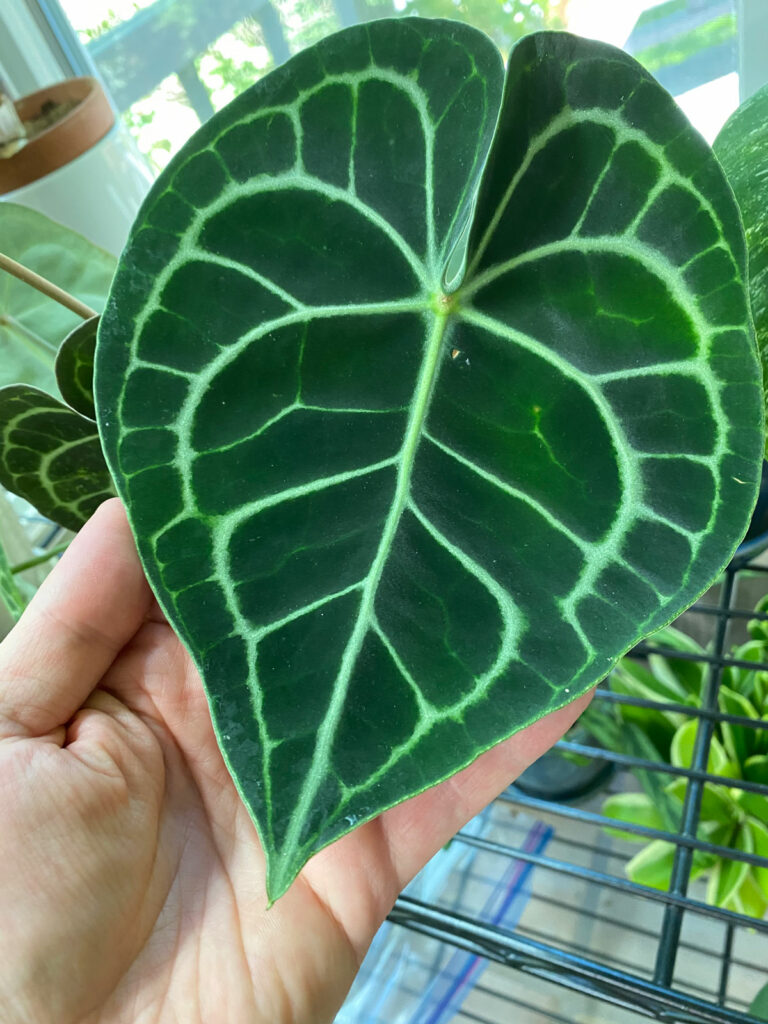
HUMIDITY
Anthuriums love high humidity and are really best grown in a greenhouse, but you can grow them successfully indoors with some attention.
If your indoor winter air is dry as a result of forced air heat inside your home, I would highly recommend getting a humidifier. I experimented with different humidifiers and found one that I LOVE.
I run it from about October (or whenever we turn our heat on in the house) until April or May so (when we normally shut off the heat).
Try and maintain humidity of at least 40% relative humidity, if not more. 50-60% indoors would be better.
Do you need a good humidifier? I’m thrilled with mine, so if you need one, read my blog post where I talk about humidity and houseplants, and my absolute favorite humidifier.
I’ve tested tons of humidifiers and I talk about the best one I’ve come across. I use it on-stop during the winter!
WATERING
Anthuriums, like many orchids, are epiphytes so they grow on trees and tree branches. They are often drenched in nature from frequent rains, but they will dry out quickly because their roots are much more exposed because of the way they grow.
This is what you must reproduce in the home in order to be successful.
Don’t let these plants sit in water or it will spell death and they will rot. After you water thoroughly, make sure you discard excess water. Let it ALL drain away. Don’t let any sit in the saucer underneath.
Don’t water again until the top inch or two of the potting mix is dry. Just use your finger to determine that.
You’ll want to try to keep most of the potting mix lightly moist, with the top couple inches being dry and the rest of it being barely moist. If it is still wet underneath, don’t water. Wait longer and check your plants regularly!
You can’t just have good watering techniques though. Epiphytes like Anthurium demand an appropriate potting soil as well in order to thrive.
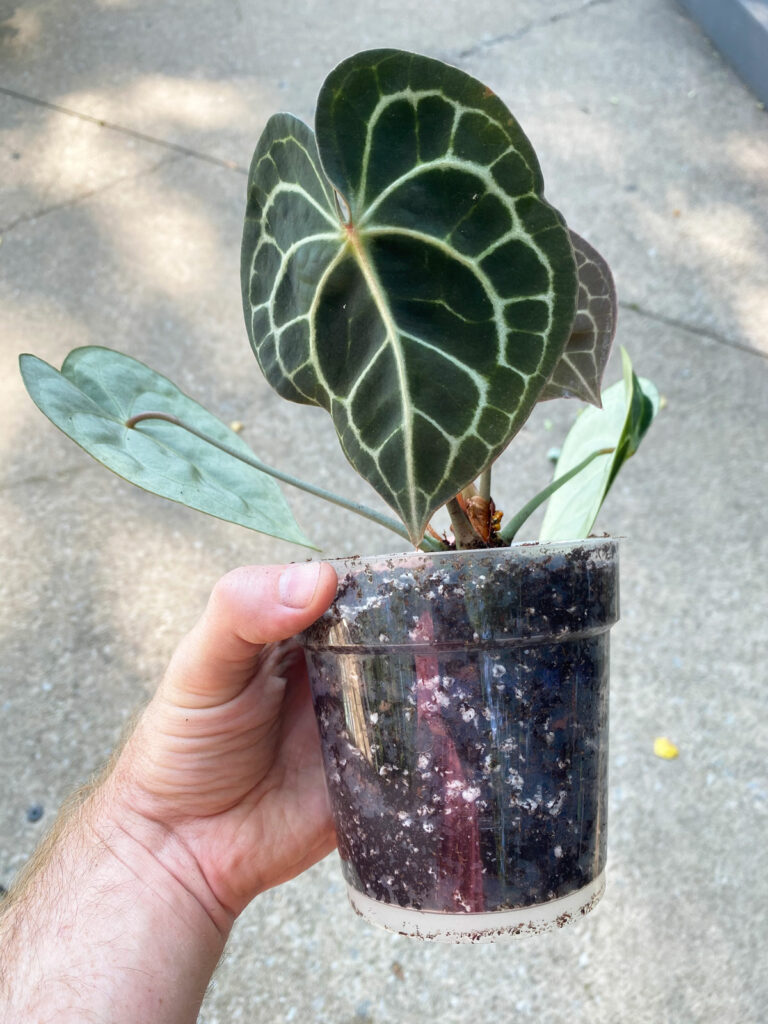
SOIL
Since these plants are epiphytes, they require fantastic drainage. To accomplish this, I like to add orchid bark to my potting mix. This is the “secret” to growing these plants.
You can start with 1 part of orchid bark to 2-3 parts of whatever all-purpose peat-based houseplant potting soil that you like to use. This will provide the amazing amazing drainage that they need to thrive.
You can also throw a handful of perlite in the mix for good measure.
Equal parts potting mix, perlite and orchid bark results in a nice, chunky mix that these plants love. This is the mix that I am currently using for this plant.
FERTILIZING
Fertilize throughout active growth in the Spring and Summer time. I like to fertilize dilutely with every watering (or almost every watering).
My favorite houseplant fertilizer is Dyna-Gro Grow and I purchase on Amazon. I add 1/4″ teaspoon per gallon of water and use it on all my leafy tropicals.
It is an amazing, COMPLETE fertilizer and is urea-free so it won’t burn your plants. I highly recommend this fertilizer and I’ve had great results from using it.
AIR CIRCULATION
Since these are epiphytes, they love air circulation. Think about it. In nature they’re growing on the side of cliffs, rocks, and on trees, so they’re exposed to a good amount of air circulation.
Air circulation will benefit all plants, but especially epiphytes like Anthuriums. I’m not talking about cold drafts though 🙂 You’ll want to avoid those.
I like to gently circulate the air in my sunroom with my ceiling fan. I’ll turn it on low and it will provide circulation for my Anthuriums, orchids, and all the other plants.
If it is warm outside, open a window for air circulation. Or better yet, let it sit outside for the summer in the shade to get the benefit of rainwater, natural air circulation, and higher humidity levels.
PROPAGATION
Propagation is best done by division when you repot, if your Anthurium has more than one stem. Gently loosen the roots and tease apart any new section of growth.
Make sure each division has roots and at least 1 or 2 leaves of its own and pot it up separately.
Where to Buy Anthurium Clarinervium
This is the real challenge! This is a very hot plant that is both expensive and difficult to find. Most websites that you find will have the dreaded “out of stock” phrase next to Anthurium clarinervium.
Regardless, here are a couple other sources to keep your eye on and you can even get on the waiting list for some of them. They are both fantastic companies and I’ve had great experiences with both of them.
NSE Tropicals in Florida, run by Enid Offolter, has an amazing array of tropical plants and I highly recommend them.
PA Orchid Exchange is where I purchased mine, but it is not a regularly stocked item (but then again, it probably isn’t a regularly stocked item anywhere!). Mine was beautifully packed when I received it.
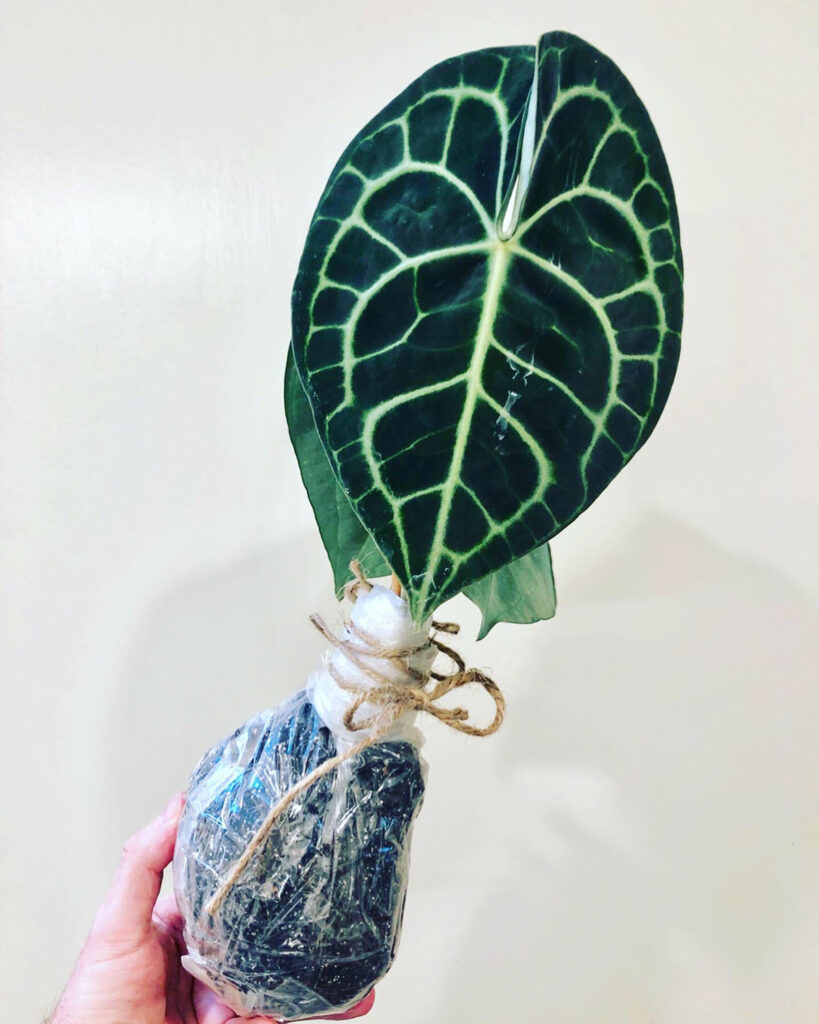
ANTHURIUM CLARINERVIUM FLOWER
No one grows this plant for its flowers, but I’ve found that they do appear pretty often.
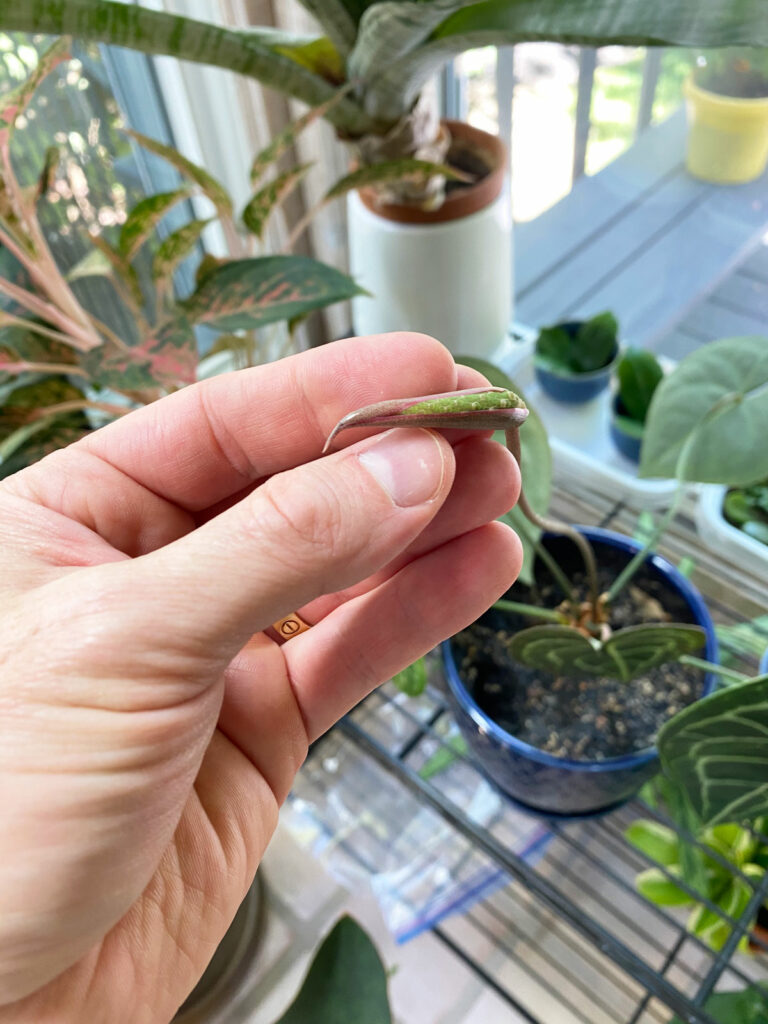
Since the flowers are insignificant, I usually just cut them off so that my plant can focus its energy on growing new leaves.
ANTHURIUM CLARINERVIUM PROBLEMS
ROOT ROT
I have learned not to always trust the potting mix that plant comes in. The potting mix that mine came in was not sufficient. Even though I knew better, I didn’t change it out for a while.
Anthuriums need a chunky, airy potting mix. Mine stayed too long in a mix that wasn’t chunky porous enough and it suffered from root rot.
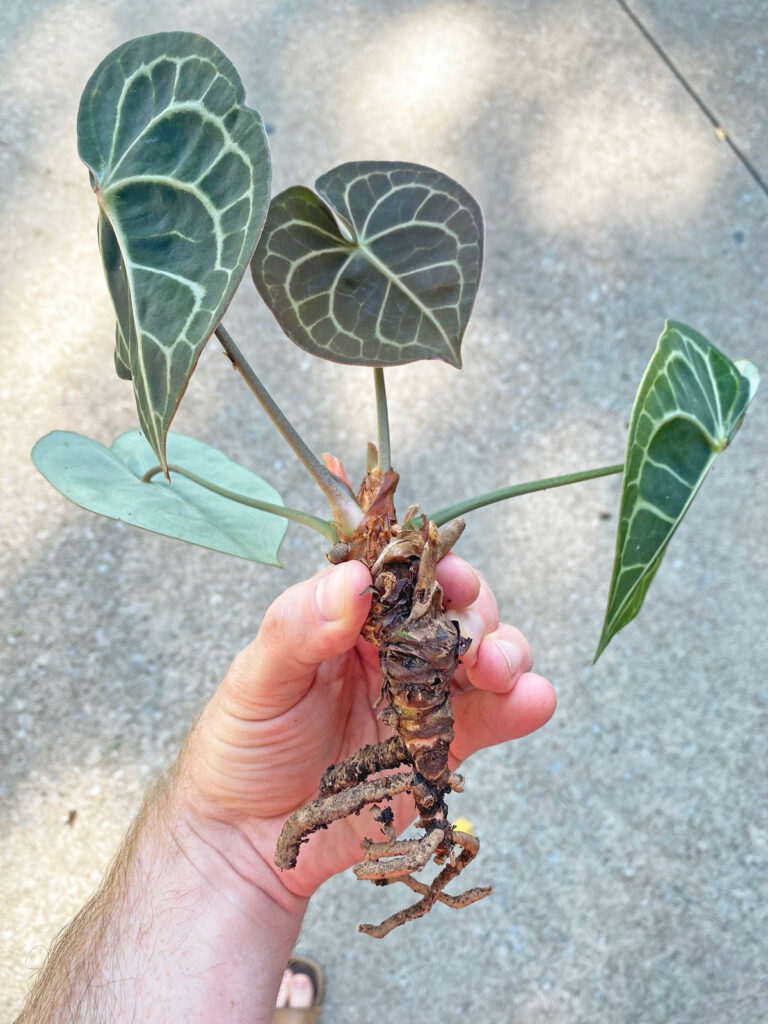
I was a little surprised once I took my plant out of the pot and saw that the root system above.
After this point, I placed it in a pot with equal parts all-purpose potting mix, orchid bark and perlite and the plant is thriving.
YELLOW LEAVES
Yellow leaves can be caused by a number of things, and because of this, it is up to you to troubleshoot. Yellowing leaves can be caused by:
- Potting mix that has gone completely dry for too long.
- Potting mix that has stayed too wet for too long. Many things can contribute to this: not enough light, a poor potting mix, pots with no drainage, and pots that are much too big for the plant’s root system.
CURLING LEAVES
Normally, when leaves curl, it can be caused by the following:
- Potting mix that is too dry
- Potting mix that has stayed too wet
- Low humidity is often an issue with these plants. Try and provide at least 40-60% relative humidity indoors.
- Temperatures that are too cold or too hot.
If you’d like to know how I grow the “common” Anthurium that you see everywhere, check out my Anthurium Care: Growing Flamingo Flower blog post. I’ve had this plant below for over 15 years and is one of my oldest and most prized plants.
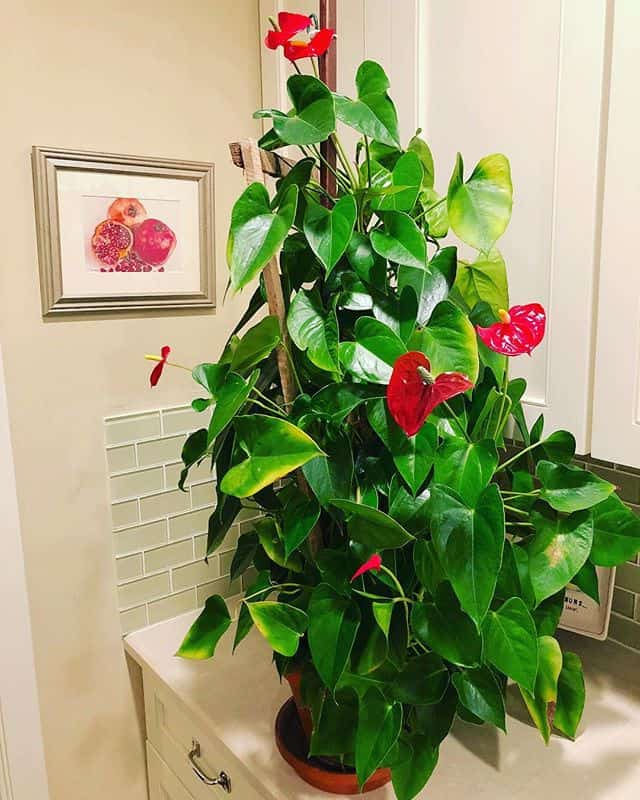
Do you have any Anthuriums? Be sure not to miss my Anthurium varieties blog post containing many unusual and rare species that you can grow in your home. Comment below with any questions!

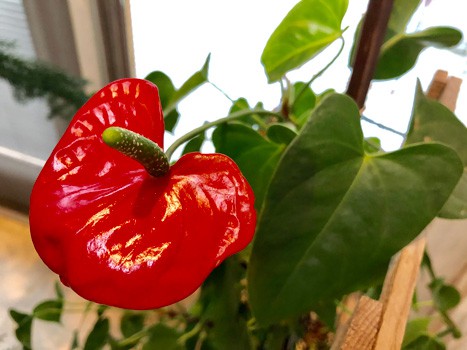
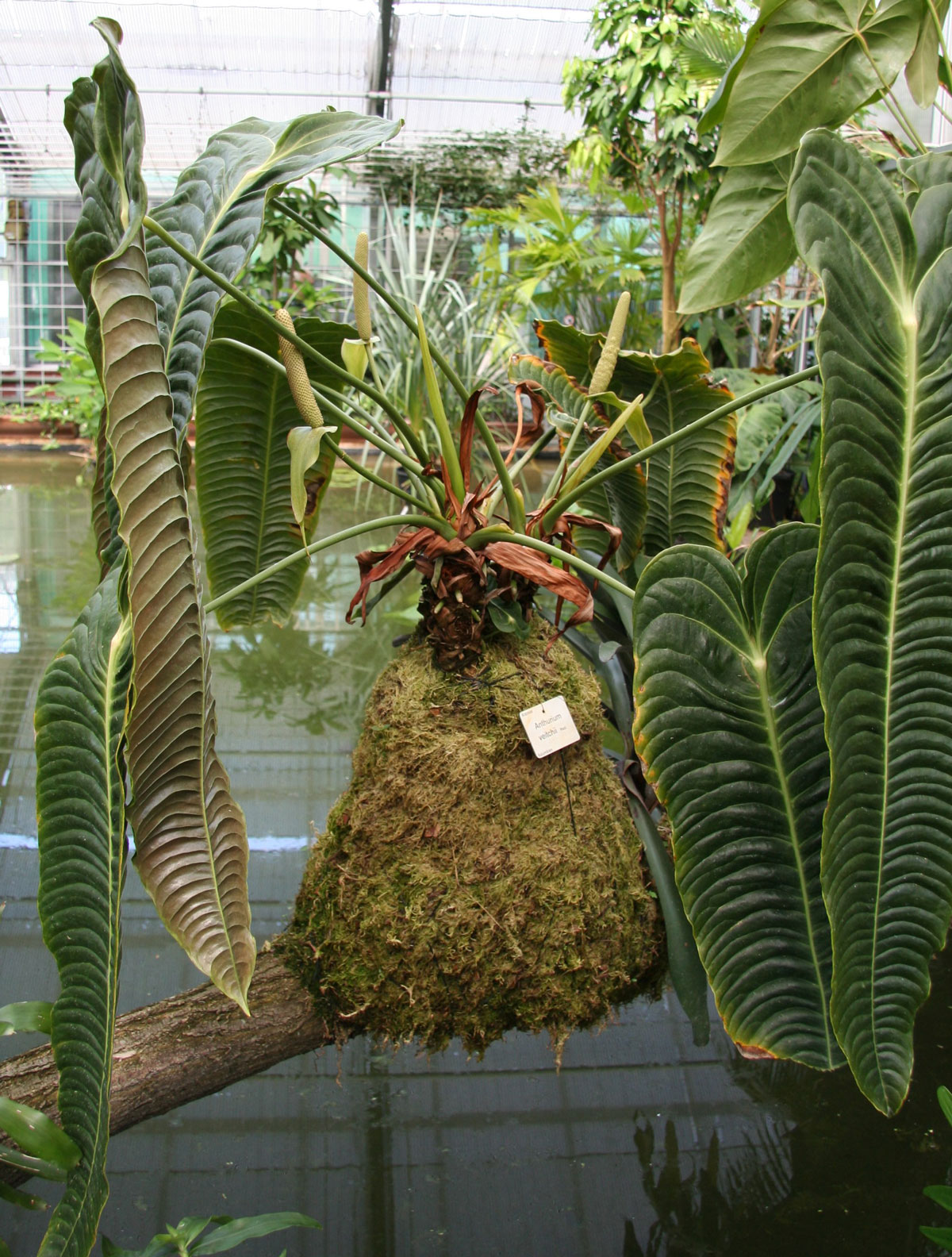
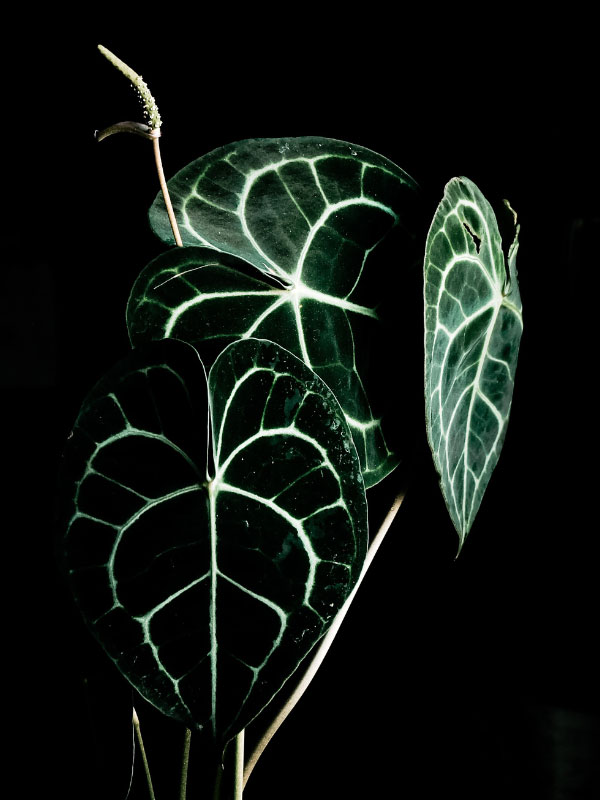

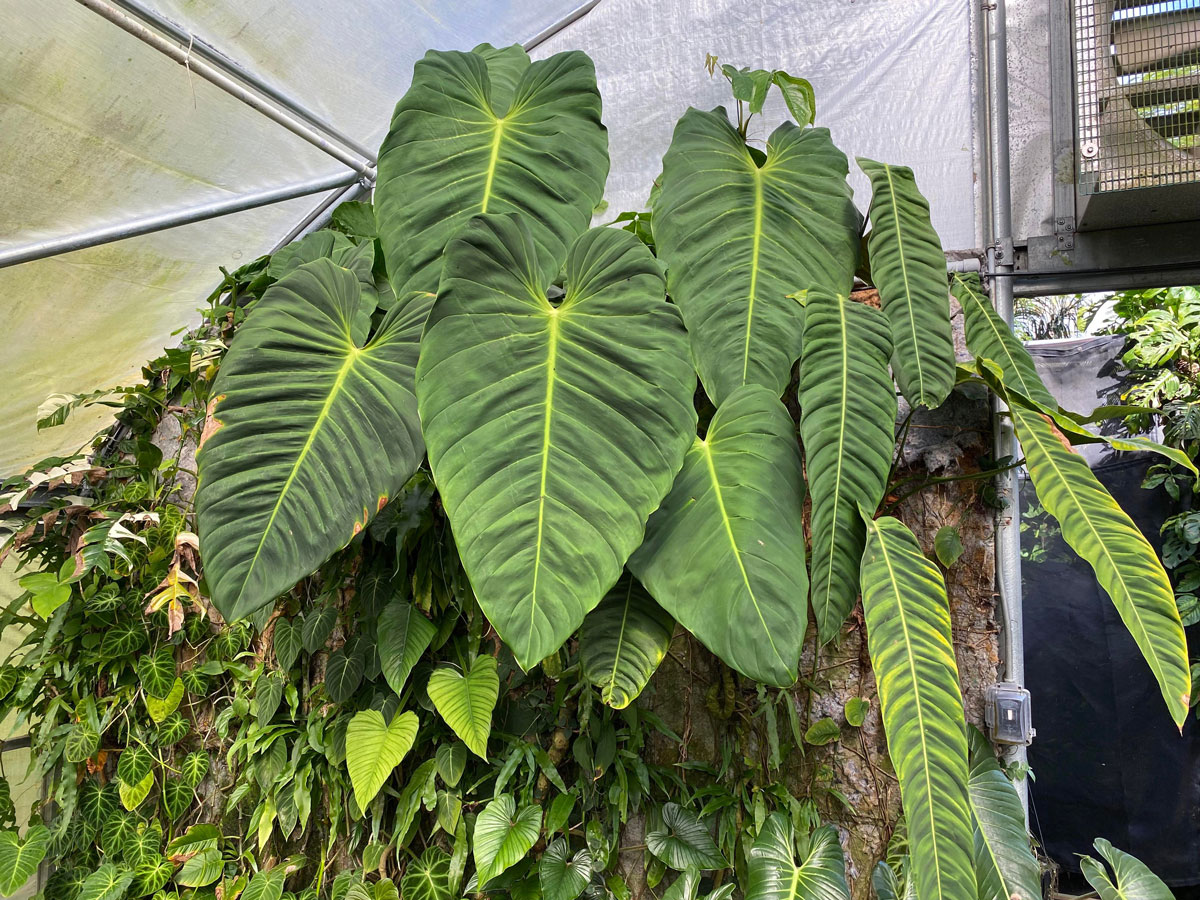
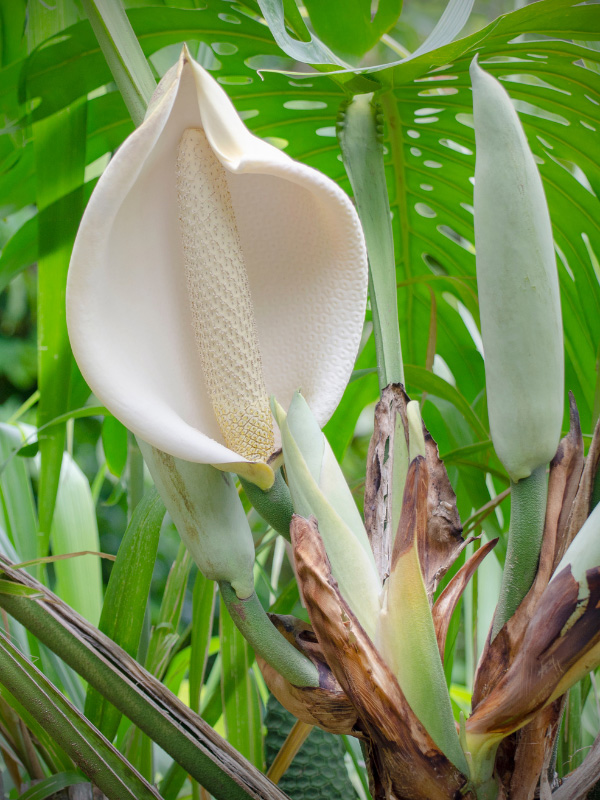
Collette Murdoch
Tuesday 19th of November 2024
Hello, we have a clarinervium that has no roots, they have died off from root rot. Can it grow new roots from the stump? I’m hoping so.
Raffaele Di Lallo
Thursday 21st of November 2024
As long as the base of the plant is still firm, there is hope! Good luck Collette.
Maya
Monday 19th of August 2024
Hi
I inherited what I think is an anthurium clarinervium decades ago. Before reading your article, I had no idea that it was an epiphyte that required 'airy' soil - thank you.
It has propagated over the years, and each plant seems to be able to support only 2-3 leaves. Once a new leaf emerges, an existing leaf begins to brown. This occurs regardless of frequency of watering.
Does this possibly indicate that it needs more fertilizing?
Thank you
Raffaele Di Lallo
Tuesday 20th of August 2024
Hi Maya! If you are supplying enough light, and are keeping up with watering and fertilizing, it should help out. Remember that the airier the soil, the more quickly it will dry out, so it will require more frequent watering. It's all a balancing act. Good luck!
Teresa
Monday 5th of August 2024
I just want to take a moment to thank you for your genuine articles, I have been a plant parent for about five years now :) and I have killed many plants due to incorrect articles and youtube videos. However, your advice is always on point, but more importantly I trust your articles and youtube videos. I just purchased a plant plug from Green Escapes on Etsy and I was just reviewing my care and found this article! I can take peace in knowing that your advice is genuine. I do think I have this plant in the wrong soil as i been keeping an eye on it and it seems to be staying wet too long, so as soon as I get home I will be repotting it :) It is a beautiful plant and I am anxious to watch it grow.
Again, I just want to thank you because I don't think any of your articles or youtube videos has stirred me wrong. :) Thank you for your love of plants and your genuine advice for them.
Kat
Saturday 10th of June 2023
I've had this little 4 inch guy for a couple of months now and his leaves keep turning yellow and falling off. Now he's down to one leaf. The roots are plump and healthy, but there's been no sign of new growth. Decided to transfer him into leca with 1/4 strength seaweed-based plant food, but he doesn't seem to like that either. My space is warm and ~60% humidity. I also leave a fan on low-medium to circulate air in my living room where my plant sits on a shelf near a west-facing window with no direct light. None of my other plants are freaking out like this one. What am I doing wrong?! Should I leave him in leca? Will he grow back from just roots? D: Help!
Raffaele
Monday 12th of June 2023
How far exactly is your plant from the window? And is it off to the side of the window? Everything you've described sounds ok, but I'm wondering about the light. Have you let your potting mix dry out completely at all?
aroidsale
Tuesday 25th of October 2022
a complete and useful article, thanks for the information.
Raffaele
Tuesday 25th of October 2022
Glad you enjoyed it!